I just received a reply from Professor Mark Mcmenamin!
Dear Dale Brennan (aka History Hunter),
I received your request to comment on your new find of a bronze putative ancient coin with the palm tree showing dangling roots. This coin is an example of one of the mysterious Farley Coins. There has been much discussion of these coins in popular and scholarly publications. Some have considered these coins to be evidence of a Carthaginian presence in America. However, thanks to new discoveries such as yours, it now appears that this coin series in fact represents fantasy copies of ancient coin designs combining Greek and Carthaginian elements. I was able to demonstrate this in the following book:
McMenamin, M. A. 2000. Phoenicians, Fakes and Barry Fell: Solving the Mystery of Carthaginian Coins Found in America. Meanma Press, South Hadley, Massachusetts. ISBN 1893882012.
The late Gloria Farley, who had read of my Carthaginian map coin research, first brought these fantasy replicas to my attention. Her specimen was very worn and corroded. I was able, in 2000, to locate a Farley Coin in Northampton, MA, from the same or very similar dies that still retained mint luster under a lacquer coating. Thus no way can this be an ancient bronze coin. Nevertheless, your coin remains an important piece of American history and will henceforth be referred to as the ?Wisconsin Farley Coin.? Who minted these fantasy coins, and why, remains a mystery. Also mysterious is why these coins are scattered all over Eastern and Midwestern North America. Somebody went to a lot of trouble to mint these coins, probably well over one hundred years ago. I would very much like to learn the answers to these questions. Farley coins such as yours sell on the open market in the 50-100 dollar range. Eleven specimens are known, from five different die varieties. Your coin is of the Alabama-type die variety. These coins will likely become more valuable as we learn more about them. For example, how deeply was your coin buried?
At present, no authentic Carthaginian coins have been found in North America. Jeremiah Epstein in his 1980 article in Current Anthropology actually mentions one of the "Farley coins" in his paper. He accepted it as a genuine ancient coin and did not identify it as a copy or fantasy piece.
Carthaginian map coin theory, on the other hand, is still going strong and has gained additional supporters. The most recent paper on this subject is the following:
McMenamin, M. 2009. The mystery of the Carthaginian map coins. NI (Numismatics International) Bulletin, v. 44, nos. 7/8, p. 125-126.
You have made an excellent and important find. If you wish to post my reply to TreasureNet, please feel free to do so, but please let me know when you post it, many thanks.
Happy hunting,
Mark McMenamin
-----------------------------------------

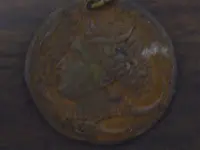


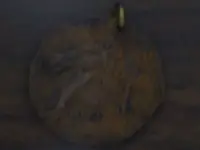
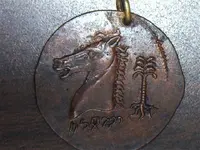
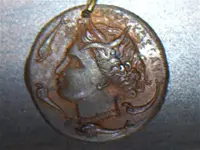
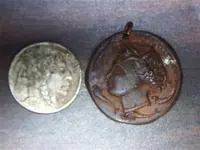







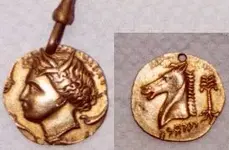

 But thats OK. 8) I am not here to argue only to give my opinion. What you are saying is that there is a chance that the Maine coin/fob was recently lost and the Massachusetts coin was also recently lost and HH Wisconsin coin was also recently lost from someones collection of mint ancient coins that exist nowhere else on this planet besides America?
But thats OK. 8) I am not here to argue only to give my opinion. What you are saying is that there is a chance that the Maine coin/fob was recently lost and the Massachusetts coin was also recently lost and HH Wisconsin coin was also recently lost from someones collection of mint ancient coins that exist nowhere else on this planet besides America?  Can you say that all in one breath?
Can you say that all in one breath? 

